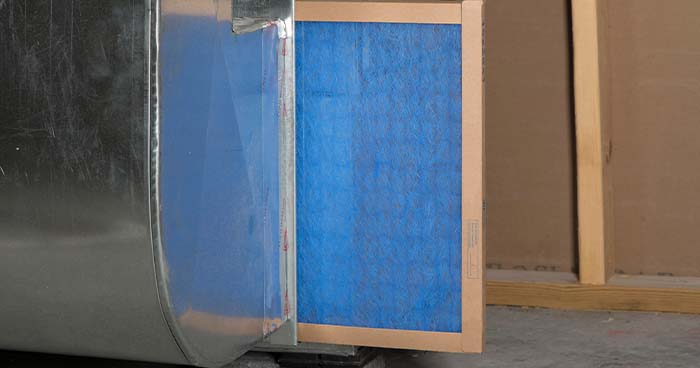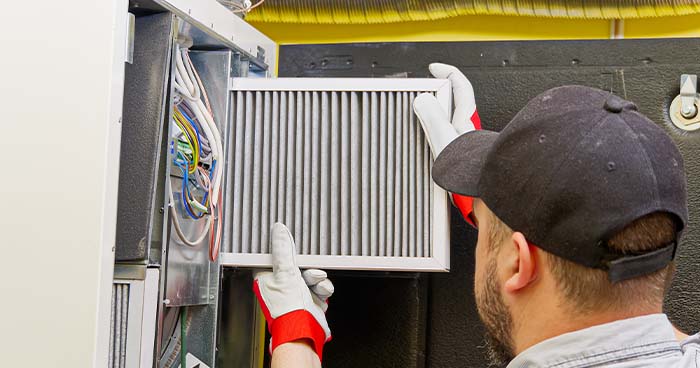Your HVAC system is one of the biggest investments in your home. If you want to protect that investment, you need to keep up with routine HVAC maintenance. Changing out the air filter plays a big role in the health and safety of your system.
Replacing your air filter is a task most homeowners can do on their own, fortunately. We’ll help you determine the right HVAC filter size and type, but if you need help, you can always contact one of the professionals at HELP!
Why Does the HVAC Filter Size Matter?
Getting the right size filter is key to the health of your HVAC system. If your air filter isn’t the right fit, it just won’t work. A filter that’s too small will leave space where debris and particles can enter; a filter that’s too large won’t fit in the slot. You can’t trim it down, either, since that will create gaps that allow things like dust, dander, pollen, and indoor air contaminants to enter.

Look at Your Existing Air Filter
If your HVAC system has an air filter, you can look for its size to ensure you can get the right replacement. Most filters have sizes listed on the side in print, including the length, width, and depth in inches. Usually, they’re listed in that order.
Measure It Yourself
Not all air filters will have the size printed on the side. If yours doesn’t have a size printed, you can measure it on your own and do a little math to determine the length, width, and depth of the replacement. Remember to pay attention to the orientation to ensure you’re getting the right size.
Measure Air Register or Air Filter Slot
If you can’t check the size of the filter or measure it, such as if your HVAC system is missing the filter, you can measure the slot it goes into as a backup plan. This may be more challenging, but it’s simple and straightforward.

Like measuring the filter itself, the air filter slot will measure out to the same size as the actual filter – not the size of the replacement you need. Once again, you’ll need to round up to the nearest inch to find the appropriate measurement for the replacement filter.
Where Is the Air Filter Located?
HVAC systems usually have an air filter on the return air intake. This is located near the return duct where it enters your HVAC system. Usually, there’s a plate that covers the air filter slot.

Some HVAC systems don’t have an air filter on the air handling unit. In this case, the air filter may be located on the return vent where it comes into your home. If you have safe access to this area, you can change the air filter on your own without a problem.
What is a filter MERV Rating?
Once you figure out the size of the system’s air filter, you still have another parameter to check. Air filters have a MERV rating, which measures how effectively they filter out small particles in the air. A MERV rating that’s higher means the filter is better at maintaining air quality and removing environmental contaminants.
Generally, homes do well with a filter that has a MERV rating of 5 to 8. This offers enough filtration to capture mold, pollen, dust mites, dander, and other contaminants. These filters won’t take a toll on your efficiency, however. You will need to change out your filter regularly, of course.
If you need HVAC maintenance like changing out an air filter, contact the pros at HELP!


